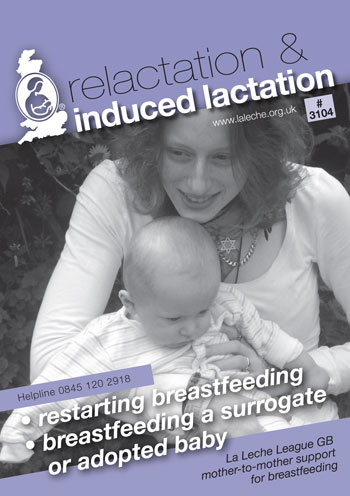Relactation and Induced Lactation
SKU:
£1.50
1.5
6.5
£1.50 - £6.50
Unavailable
per item
This booklet is currently out of print although we have a few single copies still available.
Click here to read our website article on Relactation and Induced Lactation.
LLLGB 20-page booklet for mothers who have stopped breastfeeding because of a difficult start, have very low milk production or want to induce milk production to feed an adopted baby or a baby born by surrogacy.
The booklet outlines strategies for getting started, encouraging a baby to breastfeed and for establishing, increasing and maintaining milk production. Also includes information on managing supplements and using galactogues (herbs or medications that can increase milk production).
20-page A5 LLLGB booklet
SKU: 3104/3104pack
2011
Supplementary information on Galactogogues (from March 2012)
In addition to the information on p16 of Relactation and Induced Lactation please read the latest UK guidance summarised below.
- Always consult a health professional if considering using a galactagogue.
- Only use a galactogogue if there is objective evidence to support diagnosis and where breastfeeding methods have not been effective.
- There are no drugs licensed in the UK to improve lactation.
- Domperidone is the first choice drug treatment for low milk production because it is the most effective, has the least side effects, and minimal amounts pass into breastmilk.
- Do not take domperidone if either you or your baby have a heart disorder or are receiving treatment with drugs known to affect the heart’s QT interval e.g. ketoconazole or erythromycin. If this is the case, metoclopramide is the preferred alternative.
- Do not exceed a daily dose of 30mg of domperidone.
There is insufficient evidence that herbal remedies are effective.
Reference
Drug treatment of inadequate lactation, UKMi Q&A 73.4,
Prepared by UK Medicines Information (UKMi) pharmacists for NHS healthcare professionals. 1 March 2012.
"Well put together information, clear, well explained a good starting place to explore options and understand what is involved in building a milk supply back up or induced lactation."

